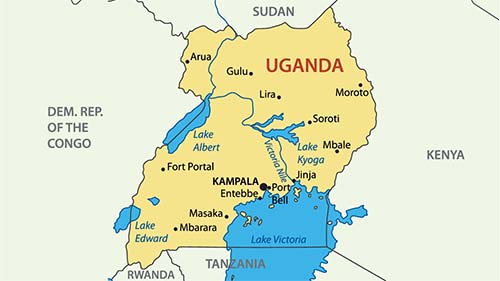Demonstrating how to Improve operational efficiency in Uganda’s overall laboratory service – Part 1
Ibrahimm Mugerwa1, Tony Boova2, Van Der Westhuizen2, Christopher Okiira1, Agnes Nakakawa3, Micheal Kasusse3, Suzan Nabadda1, Gaspard Guma1, Suleiman Ikoba1 Charles Kiyaga4
1Uganda National Health Laboratory Services, 2Beckman Coulter Life Sciences, 3Makerere University, 4ASLM
Part 1 – Achievement overview and background on Uganda’s laboratory structure. A pathway to success – key findings
Stimulating efficiency while empowering and mentoring local laboratory professionals in workflow management underpins the remarkable improvement in the routine laboratory service of Uganda’s West Nile Health Region.
With the support of the central public health laboratories (CPHL), part of the Ministry of Health, a bold experiment was initiated which made a fundamental change to the way the service was managed. The current system was suffering from a number of operational and governance challenges such as frequent stock out, poor equipment maintenance, lengthy downtime for instruments and slow turnaround times.
The pilot intervention focused on moving away from a centralized approach to handing responsibility for laboratory sample coordination to regional level. An integral part was addressing the flaws in the transport management of the physical collection and transportation of samples from the rural catchment areas.
The West Nile’s Arua central referral laboratory was chosen as the test case because of the challenges it presents in terms of distance, existing health facilities and its high refugee population. The pilot showed how delegating coordination to the center receiving and processing the samples resulted in more samples being transported and processed in a timely fashion, with bottlenecks reduced and overall workflow improved.
Overall, sample volumes went up more than 350% in the 12 month pilot study. Before intervention, the hubs in Arua averagely sent 38,534 viral load samples per quarter. This increased by 130,346 VL samples, an almost 350% rise. Before the intervention, lower sites were sending the same labs 1,517 VL samples each quarter. This increased well over 800%. The magnitude of the success of this approach sets down a clear and practical roadmap for delivering greater efficiencies to the country’s overall laboratory services, if funding were to be made available.
Summary of achievements
- Creating a reliable and efficient sample transportation system
- Improving overall laboratory inventory management
- Reducing laboratory turnaround time for all tests
- Developing an ethos of collaborative working and improving communication and reporting among stakeholders at all levels of the laboratory hub system
- Increasing timely access for patients to diagnostics for HIV/AIDS and opportunistic infections
- Illustrating the cost implications for implementing changes throughout the country.
At the start, the region’s eight hubs processed an average of 38,534 viral load samples every three months. After one year, the results were impressive, with sample handling increasing by more than 400% to 130,205 viral load samples. While the hub coordinator concentrated resources on these larger labs, the impact was far reaching, improving the performance and efficiency of both lower level sites and the physical transporting of the actual samples. Before the change, the sites reporting into each hub were sending them 1,517 VL samples per quarter. This increased almost 600% to 8,940.
Independent assessment confirmed what could be clearly observed by the labs – delegating coordination to the regional hub delivered quantifiable time and cost efficiencies, to the overall benefit of patients. It also improved morale in the individual labs and added a greater level of cooperation between lab staff and the actual bikers taking the samples. It became clear that this approach would potentially benefit the country’s overall laboratory services if additional investment were to be made to introduce this to the national hub network.
Uganda’s evolving laboratory service
Uganda took the decision to improve laboratory services nearly 20 years ago and involved setting up more than 1500 clinical laboratories of different sizes. This was to ensure 90% of the country would be served either by larger clinical laboratories in major hospitals and health center IVs or smaller health centers.
To address the challenges and costs involved with operating a high number of health laboratories, the government decided in 2011 to set up 100 regional referral centers or hubs at sub-national level. These laboratory hubs, the first of their kind in East Africa, were renovated and equipped with modern laboratory equipment as centers of excellence for routine chemistry, hematology and CD4 testing. They were intended to have sufficient capacity to support 25 to 30 smaller, local, health facilities, each in turn serving a small catchment area of 30 to 40km radius.
Many countries in Africa including Uganda still face challenges in ensuring that patients have access to quality laboratory services, particularly in rural or hard-to-reach areas. Despite substantial investment, the number of tests being carried out was still relatively low and this was increasing pressure on the healthcare system to take further steps to improve the detection, diagnosis and monitoring of disease progression. This was particularly important for infants and the very young. The need to increase access to critical HIV diagnostics in more rural areas was instrumental in the setting up of the regional hubs in 2011.
Pivotal role of sample transporting system
Therefore, alongside the 100 regional referral sites, the government also set up 19 sample transport hubs specifically designed to extend the testing reach to these hard to access rural communities.
Each transport hub serves approximately 20 to 40 lower health facilities, with mapped road networks and an approved route schedule. These are meant to be serviced by trained motorcycle bike riders who visit between four to eight health facilities a day to collect and return samples between the referral centers and the smaller labs they serve. There is no doubt that setting up this sample transport system initially increased access to quality and efficient laboratory services in Uganda. However, this vital service was being underutilized and it became clear that inadequacies in the transport system were linked to a wider problem in the existing regional lab setup.
The 10 key sample handling, processing and transporting problems could be identified as:
- Inadequate liaison between regional hub, the smaller health facilities and the CPHL labs with no real time tracking of specimens being transported through this network.
- Loss of lab productivity due to a lack of stock for essential supplies such as reagents and poor equipment maintenance with frequent load shedding.
- Absence of standardized data logs and registers, with inadequate documentation and lack of regular reporting on hub operations.
- Slow turnaround time for sample processing.
- Inability to handle emergency samples especially critical during outbreaks.
- Failed transport routes leading to underutilization of the hub’s laboratory services.
- Potential problems with sample integrity during transportation and lost samples.
- Limited implementation of Laboratory Quality Management System (LQMS) and low participation in External Quality Assurance (EQA).
- Limited integration under One Health.
- Poor staff morale, lack of training and lack of experienced leadership in coordinating workflow.
The source of the problem lay in the way regional hubs were outside the planning or decision-making processes. Responsibility for regional policy oversight was held by the CPHL. Coordination was meant to be carried out by what was known as the CPHL implementing partners (IPs), who worked centrally with CPHL but had little involvement with staff or processes at regional level. The lack of a sub national coordination arm for CPHL had left a gap in the quality and effective delivery of the hub laboratory services and this motivated the pilot intervention in the West Nile Health Region.
The result was that the number of samples being processed by the sub-national hubs was far too low, with many lower health facilities simply not being supported. Because of this, a government-backed problem-solving team was set up and encouraged to take another approach - one that would transfer decision making responsibility for workflow management (including sample transfer) to the hub itself. This had the backing of senior management at the CPHL, and they agreed to fund the placement of an experienced lab scientist at the Arua hub. A year’s pilot study was initiated with this highly experienced lab professional taking over the coordination of all activities, engaging with stakeholders at the hospital and training and mentoring the laboratory staff. The impact on sample handling and transportation were then monitored over the year.
This paper is the first of a series of documents, presenting the challenges and successes of the pilot study and intervention and highlighting how this might beneficially improve the country’s regional laboratory service if the new coordination strategy was extended across the other health regions.
Fill the form to download Full case study

CD4 Testing in Remote Areas

CD4 testing in remote areas
Follow the links, to learn how Uganda designed an innovative system to ensure that people in remote communities can receive high quality HIV prevention, care and treatment services.
How Uganda is Leaving No One Behind
Around 1,350,000 people are currently living with HIV in Uganda, and there are an estimated 33 new HIV infections per day among young people between the ages of 15 and 24.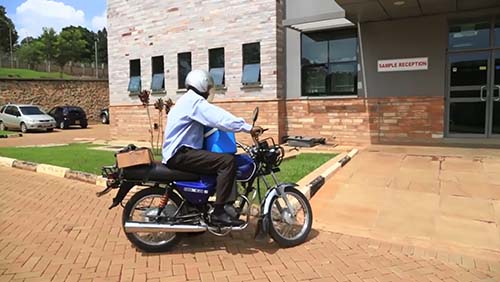
Efficient Sample Collection in Remote Areas
The main challenge faced by people in remote areas when it comes to HIV/AIDS testing is access. People in remote areas can be very poor, so it can be difficult for them to travel to the service point, although the treatment itself is free in Uganda.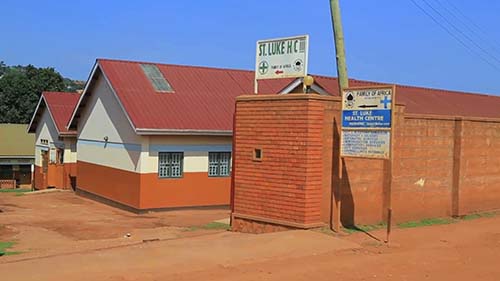
High Quality Testing in Rural Communities
The majority of countries still don’t have the infrastructure, transport or technology to effectively manage the collection, storage and transportation of the blood once the sample has been taken.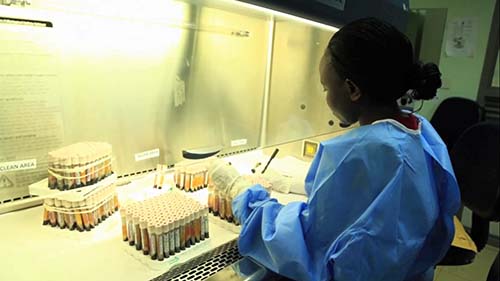
Demonstrating Operational Efficiencies: Part 1
Stimulating efficiency while empowering and mentoring local laboratory professionals in workflow management underpins the remarkable improvement in the routine laboratory service of Uganda’s West Nile Health Region.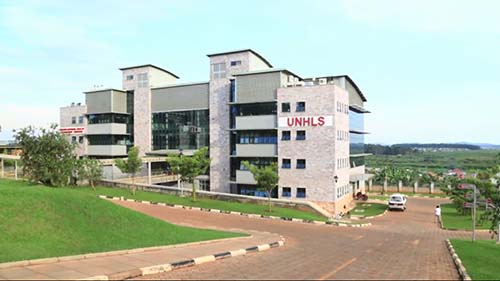
Demonstrating Operational Efficiencies: Part 2
Uganda’s Central Public Health Laboratories (CPHL) recognized that its regional laboratory service was suffering from a number of challenges that were affecting service delivery and patient outcomes.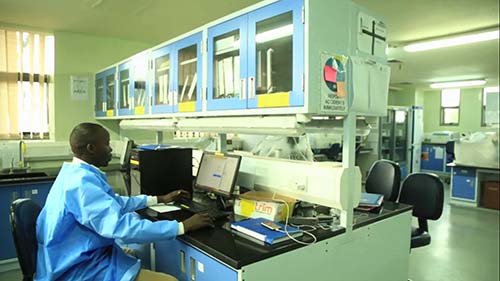
Demonstrating Operational Efficiencies: Part 3
The initial assessment found that supplies would be delayed, with frequent stock outs, due to poor communication because there was no clear chain of command for coordinating this activity.